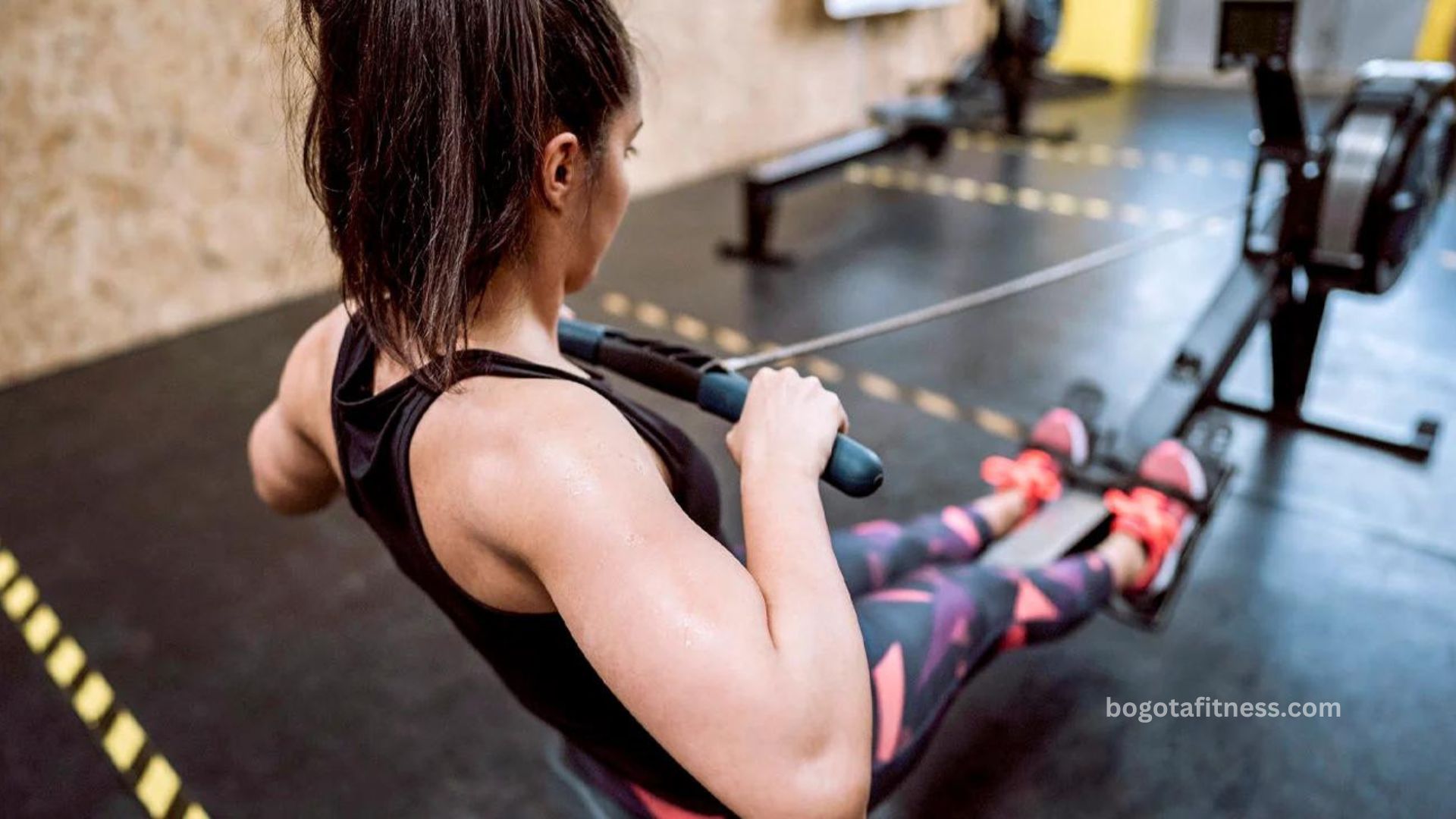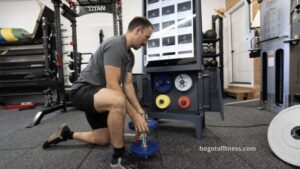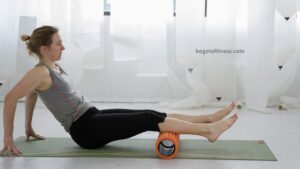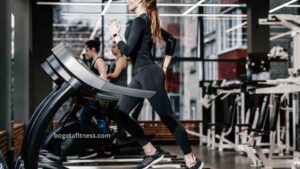You’ve certainly observed rising crowds surrounding the rowing machines, or “ergs,” at your gym during the past few years. Usually tucked away in a corner or along a wall, they are long and low. They used to gather dust, but these days they get a lot of use. This is due to rowing’s reputation as a fantastic kind of exercise that may improve your cardiac capacity and give your entire body a workout.
The actual thing is a fantastic choice if you live close to water. However, utilizing a rowing machine is not a bad alternative. It’s possible that rowing indoors will improve your workout!
To find out more about the advantages of using rowing machines, how to do it correctly, and how to prevent injury, we spoke with exercise physiologist Chris Dempers.
What is rowing and how do you do it?
Rowing works the entire body, much like jogging or an elliptical workout. It’s not a physical activity, though, like those others. Thus, your upper body will be working harder and your legs will be under less strain.
A single stroke consists of four fundamental movements: the catch, the drive, the finish, and the recovery. Dempers explains the fundamentals and provides a step-by-step tutorial for each:
- The catch: Beginning with your feet strapped into the foot bar (or, depending on the machine, on the foot bar), sit on the seat with your knees bent. Next, use a cable to grasp the handle that is fastened to the machine’s flywheel in the front. Push yourself forward until your upper body is inclined forward by about 55˚ and your shins are almost perpendicular to the ground (if you’re not sure what it looks like, imagine how 10:00 is positioned on a clock face).
- The drive: Lean your body back in a smooth, controlled action by pushing yourself back with your legs and dragging the handle in the direction of your chest with your core muscles.
- The finish: Consider the conclusion to be the exact opposite of the catch. Your legs are extended fully and straight. You have a small backward slant. Dempers states, “Your arms are contracting into your chest and, eventually, down towards your solar plexus.” Your torso should be at approximately 2:00 right now if it was at 10:00 earlier. It’s time to reset for the next stroke, even though this one might be over.
- The recovery: As you glide forward, stretch your arms and the handle in the direction of the flywheel and bring your knees back to your starting position. Dempers continues, “It should be one smooth motion from beginning to end.” “After that, you continue the movement for however long you want to work out.”
You may modify the amount of airflow into the flywheel and, consequently, the amount of tension you pull by using the damper, which is a lever on the side of the flywheel. You receive more tension with higher airflow, which translates into a harder workout.
Row safely
But to reap the maximum advantages of rowing and avoid injury, as with any activity, you must ensure that you perform it with the correct form. Ensure that you:
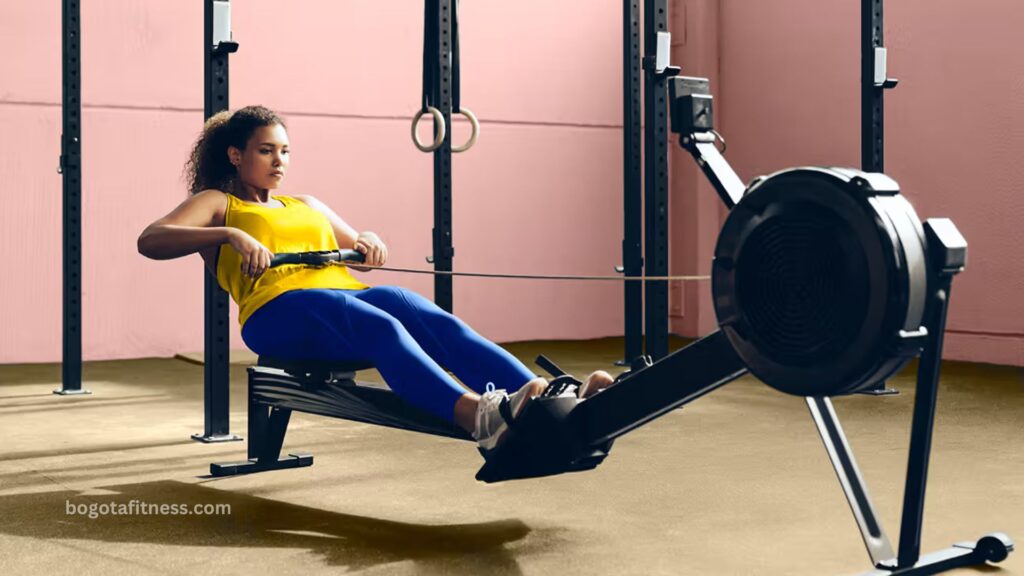
- Keep your knees straight and neutral. “Make sure you don’t lock them when you’re pulling back,” adds Dempers, “because that can cause hip issues.” “You don’t want them bowing out to the side as you go through your motion.”
- Maintain proper posture. Maintaining proper posture is crucial and might become more challenging as you increase the tension. Dempers advises, “Consider balancing a book on your head like in the old posture training films.” “Have your head straight and your shoulders back.” Avoid hunching over with your head down and shoulders round.
- Keep your core engaged. When you row, your arms and legs work quite hard, but your core muscles also work very hard. Your body is stabilized and your lower back is supported, which increases your efficiency, guards against injury, and gives each stroke more power.
Dempers says that improper form during rowing can cause problems with your upper and lower back as well as back spasms. Pulling higher on your body, such as towards your chin rather to your chest, increases your risk of developing shoulder problems.
You can get the most out of your workout and feel good—if a little exhausted—every time you get off the rowing machine by keeping these pointers in mind.
What does a rowing machine do to your body?
Even though it may appear easy, performing the same four steps repeatedly works up a serious workout.
According to Dempers, rowing combines strength and cardio components. “It really tones your legs, especially when you increase the machine’s tension for a stronger pull.”
As you go back and forth on your pulls, your back is also worked out. Dempers continues, “Practicing upper back strength adds a postural element to rowing.” Given how many individuals must spend their days staring down at computers or phones, that is really significant. It is essential to correct the posture of the upper spine.
Remember your core, too! During a rowing machine session, your lower back, obliques, glutes, and hamstrings are all worked out. Your core will work throughout the whole rowing motion if you maintain appropriate technique. For the purpose of preserving stability and increasing speed, those muscles must be strengthened.
Also Read: KETTLEBELL WORKOUTS FOR BEGINNERS: EFFECTIVE TIPS
Health benefits of using an indoor rowing machine

Even just by going through the movements, you’re undoubtedly beginning to see how much your body can benefit from a full-body workout like rowing. These are only a handful of them.
1. Burns calories
“When it comes to burning calories, rowing is up there,” adds Dempers. “I would put it above an elliptical machine but below running.” No matter how hard you work, it’s still a terrific workout because your speed, intensity, and resistance all determine how many calories you burn.
2. A low impact, high-cardio option
Rowing has several advantages, one of which is that it is a low-impact activity that provides much-needed relief for joints. “You’re not putting as much wear and tear on your back and knees because it’s a resistance exercise done in a seated position,” adds Dempers.
He clarifies, though, that selecting rowing over a high-impact sport like jogging does not mean giving up on your aerobic workouts.
“If your sole purpose is to use an ergometer as an aerobic workout in place of something like running, you can work out for thirty minutes and get a great cardio workout.” Your lungs and heart will be grateful.
3. Improves range of motion and joint strength
You have probably heard the saying “motion is lotion” if you have arthritis. It’s accurate! Maintaining an active lifestyle improves joint torque and motion while reducing pain and stiffness.
4. Improves posture, balance and coordination
It may not occur to you that your demeanor exudes strength, but it does. Well-developed back and core muscles support good posture and lessen pressure on the spinal column. Our muscles are also essential for balance and coordination, in addition to the brain. They aid in rapid thinking and fall prevention.
5. Reduces stress
Grab, propel, complete, and regain. Grab, propel, complete, and regain. Rowing’s repetitive nature can have a calming effect, whether you do it in your home, on a lake, or in a quiet corner of the gym. When you combine it with exercise’s ability to reduce stress, you have a natural mood enhancer.
6. An accessible exercise for most people
Rowing is safe for people of all fitness levels and is beginner friendly because you control the speed and intensity of the exercise. Additionally, the machine’s low to the ground design reduces the risk of falling and associated anxiety. Because of this, rowing is especially beneficial for the elderly, those with visual impairments, and those suffering from medical disorders including postural orthostatic tachycardia (POTS).
There are many methods of accessing rowing machines. They are not inexpensive, but they can replace several specialized machines because they provide a full-body workout with adjustable resistance. Yes, you will still require a good amount of room. The average rower is around 8 feet long and no broader than your body. While some ergs can be quite heavy, the majority are portable and easily stored, which is a significant benefit over bulky treadmills and stationary elliptical machines.
7. Fits into any workout regimen
Because rowing is such an effective cardiac exercise, you can include it into your regimen in a variety of ways. To maintain an elevated heart rate in between exercises, you can choose for brief interval training instead of the longer program described above.
Dempers states, “I think that’s what appeals to rowing.” It can be done as a single, lengthy workout or included into a longer program that you undertake in short spurts. You can quickly transition from one exercise to another, such as kettlebell swings or push-ups, and then return.
Can you get in shape by just rowing?
While variety is undoubtedly a good thing, there are moments when you just want to fall into a comfortable pattern. If you identify with that, rowing may be the ideal cardio-and strength-training exercise you’ve been searching for.
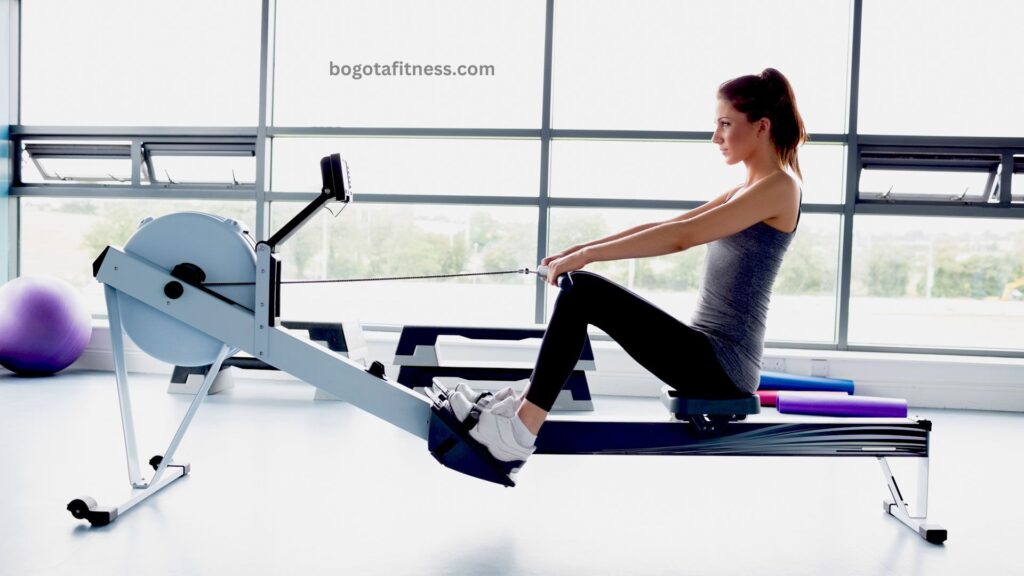
Fitness enthusiasts, however, won’t be content to merely work out on a rowing machine. This is so because using all three planes of motion is not necessary when rowing inside.
These are the three motion planes:
- The sagittal plane: moving front and back.
- The coronal (or frontal) plane: moving left and right.
- The transverse plane: rotating movement.
Like many popular exercises, the sole plane of movement needed for indoor rowing is the sagittal plane. Thus, you might also want to engage in other exercises that require you to move in the coronal and transverse planes, such as yoga or calisthenics. An alternative is to row in a real boat, which uses all three planes of motion.
How many minutes do you need to row a day?
Each of us should engage in 150 minutes a week of moderate-intensity exercise, according to the CDC. Like a cycle, elliptical, or treadmill, an indoor rowing machine allows you to customize the level of intensity at which you work out.
The amount and frequency of your rowing machine use is contingent upon your participation in other physical activities.
Let’s assume for the time being that you exercise exclusively on the rowing machine. If so, you ought to work your way up to 20 minutes a day of moderately intense rowing. You can experiment with the length and frequency of your sessions as your endurance increases. For example, you might like a 50-minute session three times a week.
Remember that in order to maintain appropriate form, you might need to start out slowly if you’re new to rowing. After you master that, you’ll need to gradually increase your strength and stamina. That’s alright, too. In actuality, it’s essential for reasons we’ll discuss shortly.
Any kind of exercise is beneficial for your health, so even if you can only work out for five minutes a day on a rowing machine, try to get as near as you can to the 150-minute mark through other forms of physical activity.
How soon will you see results from rowing?
The time you spend on an erg yields noticeable effects very fast because it works the entire body; begin consistent rowing exercise and you’ll see improvements in a matter of weeks.
Just make sure you give yourself reasonable objectives. Being fit is a process. Additionally, it will take some time to perfect your form if you’re new to rowing machines. It takes months for muscle to build, regardless of the type of strength training you perform. And if you’re looking to lose a few pounds, remember that the healthiest and most long-lasting method of weight loss, according to the CDC, is to lose no more than two pounds per week.
Although it’s a virtue, you won’t require much patience. The benefits that are invisible in a mirror, including more endurance and energy, will become apparent very soon. So feel free to row your (land) boat as fast as you can!

